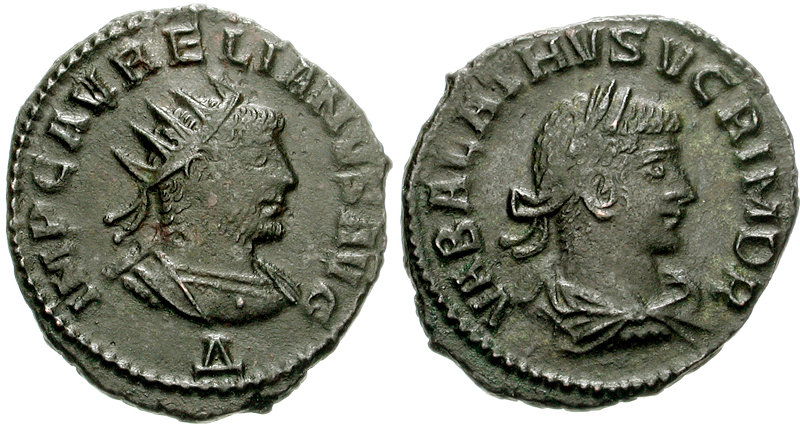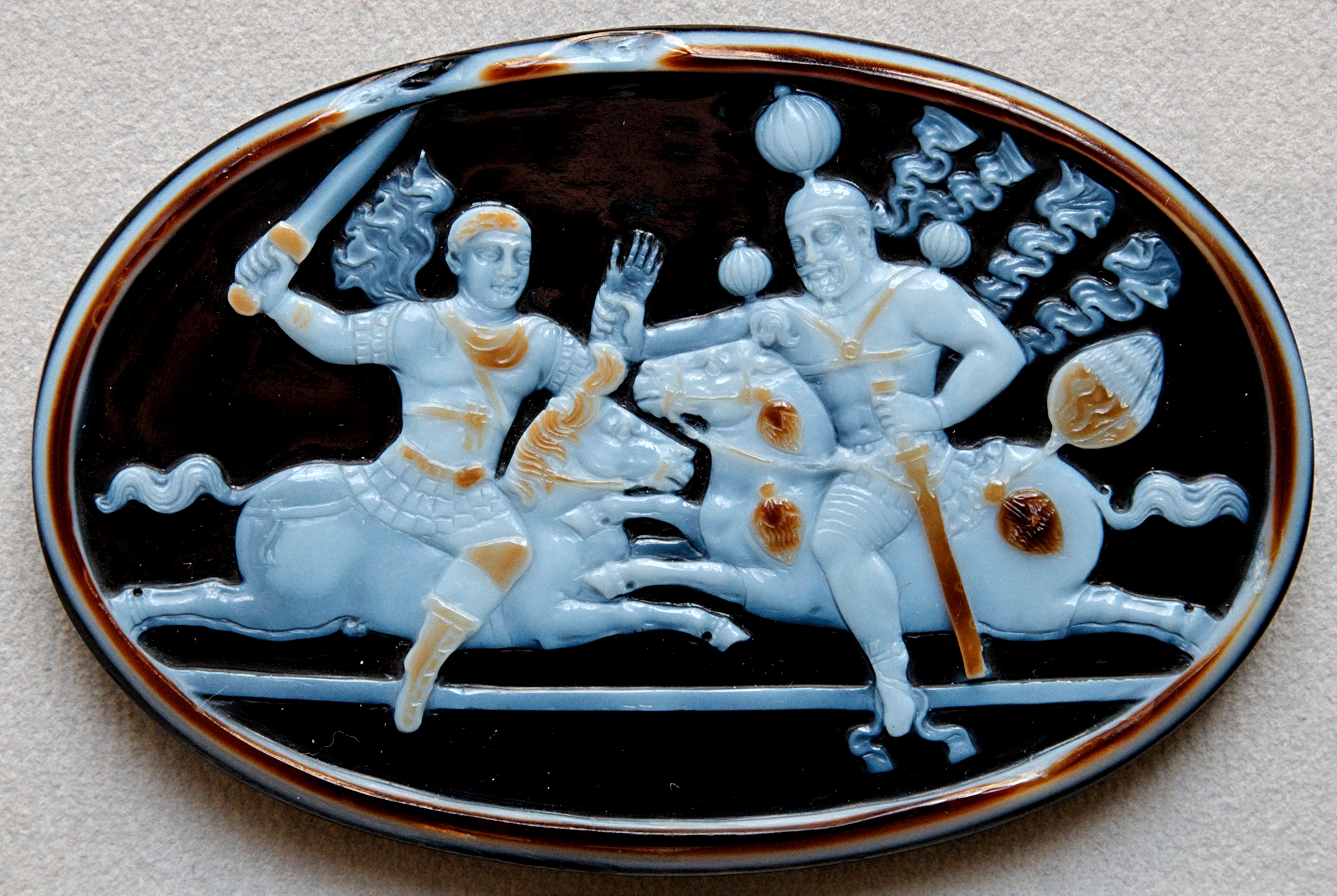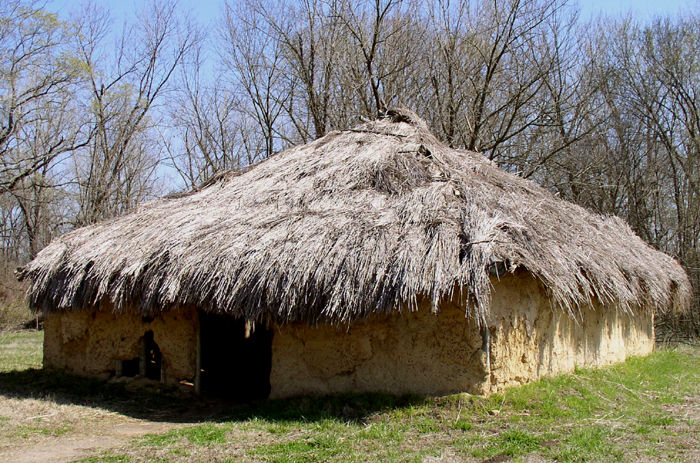|
Palmyrene Empire
The Palmyrene Empire was a short-lived breakaway state from the Roman Empire resulting from the Crisis of the Third Century. Named after its capital city, Palmyra, it encompassed the Roman provinces of Syria Palaestina, Arabia Petraea, and Egypt (Roman province), Egypt, as well as large parts of Anatolia, Asia Minor. The Palmyrene Empire was ruled by Queen Zenobia, officially as regent for her son Vaballathus, who inherited the throne in 267 at age ten. In 270, Zenobia rapidly conquered most of the Roman east, attempting to maintain relations with Rome as a legitimate power. In 271, she claimed the imperial title for both herself and her son, fighting a short war with the Roman emperor Aurelian, who conquered Palmyra and captured Zenobia. A year later the Palmyrenes rebelled, which led Aurelian to raze Palmyra. Despite its brief existence, the Palmyrene Empire is remembered for having been ruled by one of the most ambitious and powerful women in antiquity. It is also hailed in mo ... [...More Info...] [...Related Items...] OR: [Wikipedia] [Google] [Baidu] |
Monarchy
A monarchy is a form of government in which a person, the monarch, reigns as head of state for the rest of their life, or until abdication. The extent of the authority of the monarch may vary from restricted and largely symbolic (constitutional monarchy), to fully autocratic (absolute monarchy), and may have Political representation, representational, Executive (government), executive, legislative, and judicial functions. The Order of succession, succession of monarchs has mostly been Hereditary monarchy, hereditary, often building dynasties; however, monarchies can also be elective monarchy, elective and Self-proclaimed monarchy, self-proclaimed. Aristocracy (class), Aristocrats, though not inherent to monarchies, often function as the pool of persons from which the monarch is chosen, and to fill the constituting institutions (e.g. Diet (assembly), diet and Royal court, court), giving many monarchies oligarchic elements. The Legitimacy (political)#Monarchy, political legitim ... [...More Info...] [...Related Items...] OR: [Wikipedia] [Google] [Baidu] |
Arabia Petraea
Arabia Petraea or Petrea, also known as Rome's Arabian Province or simply Arabia, was a frontier Roman province, province of the Roman Empire beginning in the 2nd century. It consisted of the former Nabataean Kingdom in the southern Levant, the Sinai Peninsula, and the northwestern Arabian Peninsula. Its capital was Petra. It was bordered on the north by Syria (Roman province), Syria, on the west by Judea (Roman province), Judaea (renamed Syria Palaestina in AD 135) and Roman Egypt, Egypt, and on the south and east by the rest of Arabia, known as Arabia Deserta and Arabia Felix. The territory was annexed by Emperor Trajan, like many other eastern frontier provinces of the Roman Empire, but held onto, unlike Roman Armenia, Armenia, Mesopotamia (Roman province), Mesopotamia and Assyria (Roman province), Assyria, well after Trajan's rule, its desert frontier being called the Limes Arabicus. It produced the Emperor Philip the Arab, Philippus, who was born around 204. As a frontier ... [...More Info...] [...Related Items...] OR: [Wikipedia] [Google] [Baidu] |
Quietus
Titus Fulvius Junius Quietus (died 261) was a Roman usurper against Roman Emperor Gallienus. History Quietus was the son of Fulvius Macrianus and a noblewoman, possibly named Junia. According to ''Historia Augusta'', he was a military tribune under Valerian, but this information is challenged by historians. He gained the imperial office with his brother Macrianus Minor, after the capture of Emperor Valerian in the Sassanid campaign of 260. With the lawful heir, Gallienus, being far away in the West, the soldiers elected the two emperors. The support of his father, controller of the imperial treasure, and the influence of Balista, Praetorian prefect of the late Emperor Valerian, proved instrumental in his promotion. Quietus and Macrianus, elected consuls, had to face the Emperor Gallienus, at the time in the West. Quietus and Balista stayed in the eastern provinces, while his brother and father marched their army to Europe to seize control of the Roman Empire. After th ... [...More Info...] [...Related Items...] OR: [Wikipedia] [Google] [Baidu] |
Valerian (emperor)
Valerian ( ; ; – 260 or 264) was Roman emperor from 253 to spring 260 AD. Valerian is known as the first Roman emperor to have been taken captive in battle, captured by the Sassanid Empire, Persian emperor Shapur I after the Battle of Edessa, causing shock and instability throughout the Roman Empire. The unprecedented event and his unknown fate generated a variety of different reactions and "new narratives about the Roman Empire in diverse contexts". Biography Origins and rise to power Unlike many of the would-be emperors and rebels who vied for imperial power during the Crisis of the Third Century, Valerian was of a noble and traditional Roman Senate, senatorial family. Details of his early life are sparse, except for his marriage to Egnatia Mariniana, with whom he had two sons: Publius Licinius Egnatius Gallienus (his co-emperor and later successor) and Licinius Valerianus (brother of Gallienus), Licinius Valerianus. Valerian was Roman consul, consul for the first time eit ... [...More Info...] [...Related Items...] OR: [Wikipedia] [Google] [Baidu] |
Battle Of Edessa
The Battle of Edessa took place between the armies of the Roman Empire under the command of Emperor Valerian (emperor), Valerian and the Sasanian Empire under Shapur I, in Edessa, Mesopotamia, Edessa (now the Turkish city of Urfa) in 260. The Roman army was defeated and captured in its entirety by the Sasanian forces; for the first time, a Roman emperor was taken prisoner. Background and prelude Prior to the battle, Shapur I had penetrated several times deeply into Roman territory, conquering and plundering Antioch in Syria (Roman province), Syria in 253 or 256. After defeating the usurper Aemilianus and assuming imperial power for himself, Valerian arrived in the eastern provinces as soon as he could (254 or 255) and gradually restored order. Soon he had to confront a naval Gothic invasion in northern Asia Minor. The Goths ravaged Pontus and moved south into Cappadocia. An attempt by Valerian and his army in Antiocheia to intercept them failed because of the Plague of Cyprian, ... [...More Info...] [...Related Items...] OR: [Wikipedia] [Google] [Baidu] |
Shapur I
Shapur I (also spelled Shabuhr I; ) was the second Sasanian Empire, Sasanian King of Kings of Iran. The precise dating of his reign is disputed, but it is generally agreed that he ruled from 240 to 270, with his father Ardashir I as co-regent until the death of the latter in 242. During his co-regency, he helped his father with the conquest and destruction of the city of Hatra, whose fall was facilitated, according to Islamic tradition, by the actions of his future wife al-Nadirah. Shapur also consolidated and expanded the empire of Ardashir I, waged war against the Roman Empire, and seized its cities of Nusaybin, Nisibis and Harran, Carrhae while he was advancing as far as Roman Syria. Although he was defeated at the Battle of Resaena in 243 by Roman emperor Gordian III (), the following year he was able to win the Battle of Misiche and force the new Roman emperor Philip the Arab () to sign a favorable peace treaty that was regarded by the Romans as "a most shameful treaty". Sh ... [...More Info...] [...Related Items...] OR: [Wikipedia] [Google] [Baidu] |
Sasanian Empire
The Sasanian Empire (), officially Eranshahr ( , "Empire of the Iranian peoples, Iranians"), was an List of monarchs of Iran, Iranian empire that was founded and ruled by the House of Sasan from 224 to 651. Enduring for over four centuries, the length of the Sasanian dynasty's reign over ancient Iran was second only to the directly preceding Arsacid dynasty of Parthia. Founded by Ardashir I, whose rise coincided with the decline of Arsacid influence in the face of both internal and external strife, the House of Sasan was highly determined to restore the legacy of the Achaemenid Empire by expanding and consolidating the Iranian nation's dominions. Most notably, after defeating Artabanus IV of Parthia during the Battle of Hormozdgan in 224, it began competing far more zealously with the neighbouring Roman Empire than the Arsacids had, thus sparking a new phase of the Roman–Iranian Wars. This effort by Ardashir's dynasty ultimately re-established Iran as a major power of late an ... [...More Info...] [...Related Items...] OR: [Wikipedia] [Google] [Baidu] |
Alemanni
The Alemanni or Alamanni were a confederation of Germanic peoples, Germanic tribes * * * on the Upper Rhine River during the first millennium. First mentioned by Cassius Dio in the context of the campaign of Roman emperor Caracalla of 213 CE, the Alemanni captured the in 260, and later expanded into present-day Alsace and northern Switzerland, leading to the establishment of the Old High German language in those regions, which by the eighth century were collectively referred to as ''Alamannia''. In 496, the Alemanni were battle of Tolbiac, conquered by the Franks, Frankish leader Clovis I, Clovis and incorporated into his Francia, dominions. Mentioned as still Germanic paganism, pagan allies of the Germanic Christianity, Christian Franks, the Alemanni were gradually Christianized during the seventh century. The is a record of their customary law during this period. Until the eighth century, Frankish suzerainty over Alemannia was mostly nominal. After an uprising by Theudeba ... [...More Info...] [...Related Items...] OR: [Wikipedia] [Google] [Baidu] |
Goths
The Goths were a Germanic people who played a major role in the fall of the Western Roman Empire and the emergence of medieval Europe. They were first reported by Graeco-Roman authors in the 3rd century AD, living north of the Danube in what is now Ukraine, Moldova, and Romania. From here they conducted raids into Roman territory, and large numbers of them joined the Roman military. These early Goths lived in the regions where archaeologists find the Chernyakhov culture, which flourished throughout this region during the 3rd and 4th centuries. In the late 4th century, the lands of the Goths in present-day Ukraine were overwhelmed by a significant westward movement of Alans and Huns from the east. Large numbers of Goths subsequently concentrated upon the Roman border at the Lower Danube, seeking refuge inside the Roman Empire. After they entered the Empire, violence broke out, and Goth-led forces inflicted a devastating defeat upon the Romans at the Battle of Adrianople in 378. Ro ... [...More Info...] [...Related Items...] OR: [Wikipedia] [Google] [Baidu] |
Carpians
The Carpi or Carpiani were a tribe that resided in the eastern parts of modern Romania in the historical region of Moldavia from no later than c. AD 140 and until at least AD 318. The ethnic affiliation of the Carpi remains disputed, as there is no direct evidence in the surviving ancient literary sources. A strong body of modern scholarly opinion considers that the Carpi were a tribe of the Dacian nation. Other scholars have linked the Carpi to a variety of ethnic groups, including Sarmatians, Thracians, Slavs, Germanic peoples, Balts and Celts. About a century after their earliest mention by Ptolemy, during which time their relations with Rome appear to have been peaceful, the Carpi emerged in c. 238 as among Rome's most persistent enemies. In the period AD 250–270, the Carpi were an important component of a loose coalition of transdanubian barbarian tribes that also included Germanic and Sarmatian elements. These were responsible for a series of large and devastating inva ... [...More Info...] [...Related Items...] OR: [Wikipedia] [Google] [Baidu] |
Alexander Severus
Marcus Aurelius Severus Alexander (1 October 208 – March 235), also known as Alexander Severus, was Roman emperor from 222 until 235. He was the last emperor from the Severan dynasty. Alexander took power in 222, when he succeeded his slain cousin Elagabalus at the age of 13. Alexander himself was eventually assassinated in 235, and his death marked the beginning of the events of the Crisis of the Third Century, which included nearly fifty years of civil war, foreign invasion, and the collapse of the monetary economy. Alexander was the heir to his cousin, the 18-year-old Emperor Elagabalus. The latter had been murdered along with his mother Julia Soaemias by his own guards, who, as a mark of contempt, had their remains cast into the Tiber river. Alexander and his cousin were both grandsons of Julia Maesa, who was the sister of empress Julia Domna and had arranged for Elagabalus's acclamation as emperor by the Legio III Gallica, Third Gallic Legion. Alexander's 13-year reign wa ... [...More Info...] [...Related Items...] OR: [Wikipedia] [Google] [Baidu] |
Syrian Nationalism
Syrian nationalism (), also known as pan-Syrian nationalism or pan-Syrianism (), refers to the nationalism of the region of Syria, as a cultural or political entity known as " Greater Syria," known in Arabic as '' Bilād ash-Shām'' (). Syrian nationalism originated with the Arab Revolt against the Ottoman Empire during World War I. While most "pragmatic" Syrian nationalists advocate for Arab nationalism and view pan-Syrianism as a step toward a broader pan-Arab state, a minority of "pure" Syrian nationalists, often associated with the Syrian Social Nationalist Party, oppose this perspective. They assert that Syria should be the leading force among the Arab people and reject pan-Arabist movements that would position all Arabs on the same level. Some Syrian opposition forces who were fighting against the Assad regime government are strong advocates of historical Syrian nationalism that hearkens back to a "Golden Age." The Free Syrian Army has incorporated symbols of nation ... [...More Info...] [...Related Items...] OR: [Wikipedia] [Google] [Baidu] |








